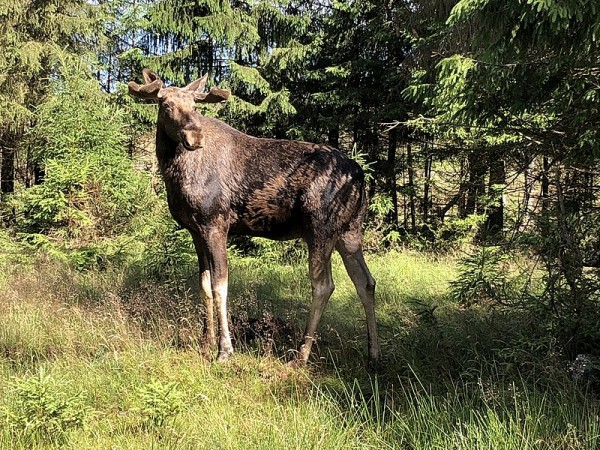September 7, 2021
In a North Dakota pasture, a pregnant moose lay dead with two unborn offspring ripped from her body.
A necropsy performed on the pregnant moose subsequently showed the presence of a third baby within her body.
The discovery was mysterious yet horrifying.
Officials say two other moose cows and two bulls were killed in a field near the Canadian border in April 2020.
“There are eight moose that have disappeared. Last year, North Dakota Game and Fish Department district game warden Jonathan Tofteland told the Minot Daily News that no meat was taken and the bulls had already shed their antlers. “All they did was take off two of the three calves,” says the narrator.
According to the newspaper, Tofteland claimed the slayings “dumbfounded” the wildlife department.
So, who murdered the moose and then abandoned them to decay – and why?
Searching for the Culprit
In May 2020, the wildlife agency distributed fliers with distressing photos of the deceased moose and offered a $2,000 prize.
Shawn Morin Jr. and Jake Charbonneau were charged with a total of 19 wildlife offenses eight months later.
Officials stated a tip line for poaching was “very helpful” in the inquiry, and prizes will be given.
Catching the Perpetrators
According to officials, Morin told authorities that he shot two moose and that Charbonneau joined him a few days later, and they killed three more.
Officials stated that while they field dressed a moose, cutting an incision in her abdominal area, two fetuses slipped out of the corpse and “spooked” them, causing them to abandon all five.
Morin pled guilty to a wildlife exploitation felony, five misdemeanor counts of unauthorized capture of a large game animal, and five misdemeanor counts of wanton wasting of big game. Charbonneau admitted to three misdemeanors:
- unauthorized take of a big game animal
- the wanton waste of big game
- assisting in the capture of big game
Morin was sentenced to 120 days in prison and penalties totaling $5,560. In addition, after losing his hunting privileges for three years, he will no longer be allowed to shoot moose, elk, or bighorn sheep in North Dakota.
Charbonneau was sentenced to 20 days in prison and forced to pay a fine of $2,360.
Report All Poachers Program

According to a post on the Game and Fish Department’s Facebook page, North Dakota’s Report All Poachers (RAP) program was tremendous assistance in solving many poaching cases. In addition, people who report game or fish-related infractions in North Dakota are eligible for prizes ranging from $100 to $1,000, depending on the type and gravity of the offense.
Please give as much of the following information as possible when reporting a game or fish violation:
- Nature of violation
- Location
- Violator’s name and address if known
- Description of violator(s) (age, build, clothing, other features)
- Vehicle description (license number, make, year, color, other features)
- Date and time of offense
- Your name, address, and phone number (you can remain anonymous if you prefer)
- Names, addresses, and phone numbers of witnesses
- Would you sign a complaint and testify if necessary?
This article by Rain Jordan was first published by Nature World News on 28 August 2021. Lead Image: Wikimedia Commons.
What you can do
Support ‘Fighting for Wildlife’ by donating as little as $1 – It only takes a minute. Thank you.
Fighting for Wildlife supports approved wildlife conservation organizations, which spend at least 80 percent of the money they raise on actual fieldwork, rather than administration and fundraising. When making a donation you can designate for which type of initiative it should be used – wildlife, oceans, forests or climate.
(Sources: Focusing on Wildlife)












Đăng nhận xét